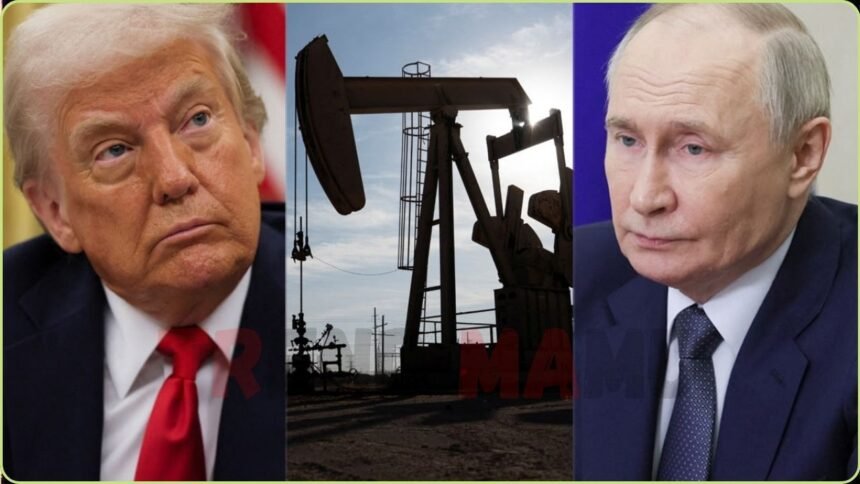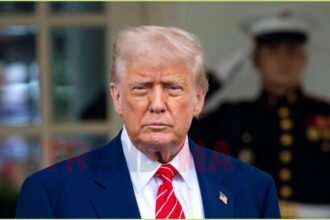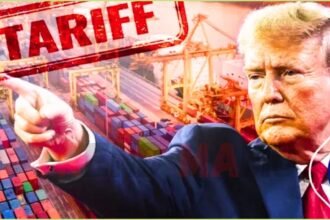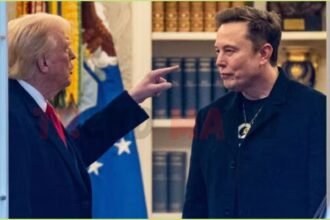Trump New Ukraine Strategy: Arming Kyiv and Threatening Russian Oil Buyer.
On July 14, 2025, U.S. President Donald Trump announced a bold shift in policy toward the Russia-Ukraine conflict, unveiling plans to supply Ukraine with advanced weapons, including up to 17 Patriot air defense batteries, while issuing a 50-day ultimatum to Russia for a peace deal or face severe secondary sanctions on countries buying its oil.
The announcement, made alongside NATO Secretary General Mark Rutte in the Oval Office, marks a significant departure from Trump’s earlier reluctance to escalate U.S. involvement in the war. Driven by frustration with Russian President Vladimir Putin, this move could reshape global energy markets and geopolitical dynamics.
This article explores the details of Trump’s plan, its implications for Ukraine and Russia, and the potential risks of his high-stakes gamble.
A New Weapons Pipeline for Ukraine
Trump’s announcement centers on a deal to funnel billions of dollars in U.S.-made weapons to Ukraine through NATO, with European allies footing the bill. The centerpiece is the rapid delivery of Patriot air defense systems, which Ukraine urgently needs to counter Russian missile and drone strikes.
Trump specified that “some or all of 17 Patriot batteries” ordered by other countries could be redirected to Ukraine “very quickly,” with nations like Germany and Norway swapping their systems for U.S. replacements. “It’s a full complement with the batteries,” Trump said, noting deliveries could begin within days.
This arrangement allows Trump to bolster Ukraine’s defenses without direct U.S. funding, aligning with his campaign promise to limit American financial involvement in the war.
NATO’s Mark Rutte confirmed the deal includes “missiles and ammunition,” describing it as a “massive” boost for Ukraine’s air defenses. Ukrainian President Volodymyr Zelenskyy welcomed the move, discussing joint weapons production and air defense enhancements with Trump’s envoy, Keith Kellogg, on July 14.
The Patriot systems, costing about $1 billion each, are critical for protecting Ukrainian cities from Russia’s relentless attacks, such as the recent 550-drone assault on Kyiv.
Secondary Sanctions: A 50-Day Ultimatum
Trump’s most striking move is his threat to impose 100% secondary tariffs and sanctions on countries purchasing Russian oil, gas, and other exports if Russia fails to agree to a peace deal within 50 days.
These secondary sanctions would target nations like China and India, which have sustained Russia’s economy by buying its oil despite Western restrictions.
Oil and gas account for nearly a third of Russia’s state revenue and over 60% of its exports, making this a potentially devastating blow to Moscow’s war funding.
Unlike previous Western sanctions, which avoided restricting Russia’s global oil sales, Trump’s plan could disrupt the Kremlin’s financial lifeline. A White House official clarified that the policy includes 100% tariffs on Russian goods and penalties on third countries trading with Moscow.
Trump emphasized his authority to impose these measures without Congressional approval, though a bipartisan Senate bill, co-sponsored by 85 senators, could grant him even broader powers to enforce 500% tariffs on Russia’s trading partners.
Russian markets reacted with cautious relief, with the rouble recovering and stocks rising 2.7% after Trump’s announcement, as the 50-day grace period offers room for negotiation. Analyst Artyom Nikolayev noted that Trump’s history of extending deadlines softened the immediate impact, but the threat remains significant.
Kremlin spokesman Dmitry Peskov downplayed the sanctions, framing the weapons deal as a continuation of U.S. policy, but pro-Kremlin voices expressed concern that Trump’s shift signals a tougher stance on Russia.
Why the Policy Shift?
Trump’s decision stems from growing frustration with Putin, whom he accused of sabotaging peace talks. “I felt we had a deal about four times,” Trump said, citing instances where Putin’s promises were followed by intensified attacks, including a recent wave of drone strikes on Ukrainian cities.
Trump’s earlier attempts at rapprochement, including multiple phone calls with Putin, have yielded no progress, with Putin rejecting an unconditional ceasefire endorsed by Kyiv.
Trump’s blunt remarks—“We get a lot of bullshit thrown at us by Putin”—reflect his exasperation, a stark contrast to his once-positive view of the Russian leader.
The policy shift also responds to domestic and allied pressure. Senators like Lindsey Graham and Jeanne Shaheen have pushed for stronger sanctions to force Russia to the negotiating table, with Shaheen calling Trump’s move “positive, but overdue.”
NATO allies, particularly Germany and Norway, have stepped up, with Germany’s Defense Minister Boris Pistorius and Norway offering to supply Patriot systems. Trump’s strategy of having Europe fund the weapons allows him to support Ukraine while deflecting criticism from his base about direct U.S. aid.
Implications and Risks
For Ukraine, the influx of Patriot batteries and other weapons is a major win, addressing its critical shortage of air defense systems. Zelenskyy emphasized air defense as a “top priority” after recent Russian attacks killed civilians and damaged infrastructure in cities like Kharkiv and Kyiv.
However, Ukrainian officials noted that even 17 additional batteries may not suffice against Russia’s escalating drone and missile barrages, with one official calling a prior pledge of 10 missiles “minuscule” for a single major attack.
For Russia, the sanctions threat could disrupt its oil exports, which have sustained its war effort through sales to China and India.
However, enforcing secondary sanctions is challenging due to Russia’s “shadow fleet” of tankers with obscure ownership, designed to evade restrictions. The policy risks spiking global oil prices and straining U.S. relations with allies like India, while European nations worry about energy price hikes and Russian retaliation.
Trump’s 50-day deadline adds urgency but also uncertainty. His history of extending deadlines, as noted by analysts, may undermine the ultimatum’s credibility. Meanwhile, the Kremlin’s muted response suggests it’s biding time, possibly betting on Trump’s mercurial nature.
For Trump, the strategy is a high-stakes gamble to pressure Putin while maintaining his “America First” stance, but it risks escalating tensions if Russia doubles down.
A Pivotal Moment in the War
Trump’s dual approach—arming Ukraine and threatening Russia’s economic lifeline—marks a turning point in his administration’s handling of the Ukraine war. By leveraging NATO to fund weapons and issuing a sanctions ultimatum, he’s balancing domestic political constraints with international pressure.
Zelenskyy’s engagement with Trump’s team and his government’s reshuffle, including nominating Yulia Svyrydenko as prime minister, signal Kyiv’s readiness to align with U.S. efforts.
Yet, with Russia holding one-fifth of Ukraine and showing no signs of retreat, the path to peace remains fraught.
As the 50-day countdown begins, the world watches whether Trump’s bold moves will force Putin to negotiate or lead to further escalation. For now, Ukraine gains critical firepower, but the broader geopolitical and economic fallout remains uncertain.









